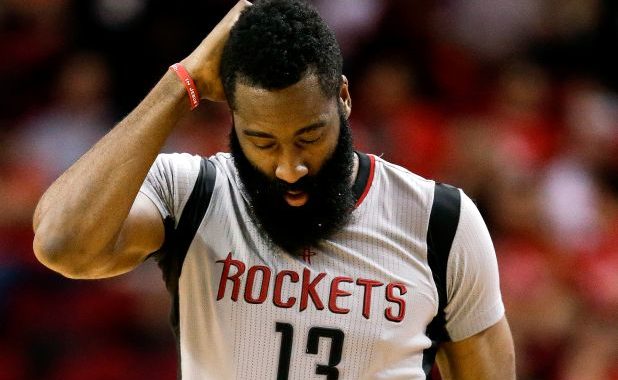
How the Lakers Can Dominate the Rockets
The Lakers will be playing Houston in round 2, so I’m here to break down how I’d attack and defend Houston as LA.
Our first question is whether or not we’ll play big or small. After breaking down hours of film and data, I’m going big. And I anticipate the Lakers will start the series that way.
Here is a video breaking down why:
The Lakers gain several key advantages by staying big:
- We keep Houston away from the rim, crippling the essence of their offense
- We’ll dominate the boards
- Believe it or not, our functional spacing likely improves
LA, being the team possibly moving small in a reactionary sense rather than a proactive one, also fails to gain many of the benefits of going small. Their personnel and scheme, along with Houston’s personnel and scheme, negate many of the remaining potential others.
And think about how much trouble OKC has given Houston going big while having bigs that aren’t vertical threats, aren’t the same degree of rim protectors, offensively having Adams (who was one of the least efficient post scorers among high volume post scorers on the season) scoring 1.1 points/possession but only having 1.3 makes per game, Adams is out there not even jumping and got 8 and 9 offensive rebounds in games 5 and 6, and OKC is not making any of the tactical moves we’ll talk about today. Huge promise while leaving a TON of points out there.
Now sub in 2 of Anthony Davis, Dwight Howard, and JaVale McGee for Adams, Noel, and Gallinari and see how those advantages become exploited even further. LA is better equipped from a personnel standpoint (and with these potential tactics) to not just hold their own against Houston playing big, but to dominate.
But don’t just take my word for it. Let’s break it down.
And if you’re wondering if Kuz or Morris count as bigs for these purposes, the answer is no. Let’s look at Morris’ interior defense (with the comparison group as Bigs with 500+ minutes this season) to see why:
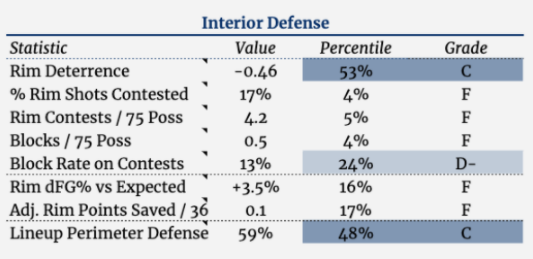
The same can be said for Kuzma.
The Rockets Offense
Switch Hunting
Lesson 1 is Houston WILL get switches, one way or another. Go ahead and be stubborn, but they’ll get the matchups they want.
95% of the time this happens via the pick & roll/pop, because:
- A hard hedge or double gives up a 4 on 3 to a team that can abuse that advantage in a way Portland couldn’t
- A soft hedge gives up Harden pull up 3s or open 3s on pops. You can soft hedge Russ, so Houston instead uses Harden to hunt these switches.
But sometimes teams are stubborn, like OKC had been at times in Round 1. Houston will attack you in the ways I covered, but they’ll also use other tactics to get the switches they want anyway:
- Harden setting invented ball screens for Jeff Green
- Harden is really good at screening and sealing that guy to post up on the perimeter, forcing that switch.
- Step up ball screens to attack downhill and force you to either switch or allow a drive
- Stringing out hard and soft hedges, as they do in their double fist set (read about that set in my Round 1 breakdown)
- Flipping and resetting ball screens until they get the switch
- Harden setting back screens when Houston has the floor spaced, making you choose between an open dunk or a switch
As we covered in the video (go watch the video here if you haven’t), Houston’s offense also prefers to manipulate the location of your big men to clear out easier driving lanes for James Harden and Russell Westbrook. Strong side corner, on-ball, or at the top of the key are those three target locations.
Against single-big lineups they do this effectively, with 63% of defensive alignments (for all bubble games) resembling this on Harden’s isolation attacks. Versus 2-big lineups this drops to 23%. And we know from the video that when the defense has rim protection in place, Harden drives far less.
When Harden drives less, Harden gets less elite offense from the rim and from free throws, Houston’s shooters get less wide open 3s, the Lakers will be in far less foul trouble, and life gets much easier.
Houston’s Supporting Cast
Let’s talk about Houston’s supporting cast for a second. Houston had the 24th highest 3-point percentage on the regular season as a team, despite having 5 of their 9 players taking 3-pointers easier than 87% of NBA players.
Using our 3PT Shot Making metric, which evaluates performance while accounts for shot quality, Houston has only FOUR shooters even above average. One of those players (McLemore) has averaged only ~7 minutes per game over the most recent three games of Round 1 (Games 3-6). One of the others is James Harden, who is the one doing the creating for others.
That means that among recipients of Harden’s penetration and kicking, TWO of seven players in their rotation have above average 3-point shooting. We can use our Leaderboards tool from our Data & Tools package to learn more:
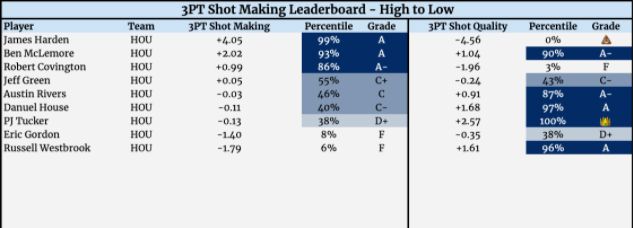
Covington and Harden are the two players who have been good shooters on poor shot quality. PJ Tucker has had the EASIEST 3-point shots of any NBA player, and still only has a 35% 3-point percentage.
The team’s 3-point percentage isn’t good, and is only where it is due to the insanely high shot quality from these shooters. Drop Harden and Westbrook’s driving rates and suddenly 3s don’t fall anymore.
And when it comes to getting to the rim, the other area the team wants to score, we see similar incompetence. Houston has four players in their rotation that can get to the rim, based on our Getting to Rim metric, which looks at unassisted creation at the rim.
But only two of those four score well at the rim according to our Finishing at Rim rating, which looks at scoring at the rim adjusting for shot quality. Here’s that data, using our Leaderboards tool from our Data & Tools package:

Stopping the Rockets’ offense isn’t the easiest, but if you can slow their driving attack it’s easy to see how the offense overall can start falling apart quickly.
And when penetration can’t create an advantage, Houston doesn’t have the playmaking guns on the roster to generate offense either.
Here's a look at Houston's advanced playmaking data from @The_BBall_Index.
I see 2 elite playmakers and then several ball movers, making easier yet high value passes to open teammates. pic.twitter.com/A57VXNGpf3
— Cranjis McBasketball (@Tim_NBA) August 26, 2020
Other than their two elite playmakers, nobody on that roster scares me. From watching film, along with looking at this data, I see a couple guys that are good ball movers in those scramble situations created when Houston penetrates or attacks in a 4 on 3 after a team gets 2 bodies on Harden/Russ in a pick & roll or other perimeter double team.
Check out our Glossary if you want to read more about these stats.
This aligns with data I logged on the season as well. I looked at every assist on the season for these players and had these takeaways:
- PJ Tucker: mostly corner -> wing or wing -> corner passes in scramble situations; had some where he dribbles at a teammate and hands the ball off, so his man needs to be prepared to show and contest on those situations; only had 8 total assists where he drive and passed to a dump off or kickout (0.1 per game).
- Jeff Green: mostly easy passes; is often the short roller but will just pass to the first guy he sees remotely open most of the time; only had 4 total assists where he drive and passed to a dump off or kickout (<0.1 per game).
- Robert Covington: mostly easy passes; only had 3 total assists where he drive and passed to a dump off or kickout on Houston (0.1 per game).
- Danuel House: actually drives and kicks/dumps the ball off; 26 total assists where he drive and passed to a dump off or kickout on Houston (0.4 per game).
- Ben McLemore: mostly easy passes; only had 11 total assists where he drive and passed to a dump off or kickout on Houston (0.2 per game).
Between those 5 players combined, we see <0.9 drives to a kick/dump off per game leading to an assist. Rivers, Westbrook, and Harden do it more often.
But even Rivers has the 4th lowest pass out rate on isolations leading to offense from teammates among the 39 players in the NBA who have at least 25 potential assists or secondary assists from iso pass outs this season. He attacks to score, not pass. And we see that in his advanced data above. Among Guards, his Playmaking component data isn’t impressive.
We see this in the players’ tendencies attacking closeouts (or not) as well. 251 players had 50+ spot up C&S jumpers this season. 7 Rockets are on that list. In terms of their willingness to attack a closeout, those players are in the 6th percentile, 8th percentile, 24th percentile, 28th percentile, 34th percentile, 51st percentile (Rivers), and 99th percentile (Russ).
And we know from the video above that 72% of the shots Harden created for others via isolation came from him driving (when ignoring double teams). That advantage creation is our focus, and the data above speaks to how poor the situation can get if you do limit Harden’s driving.
Rotating
When he does choose to drive, Harden will blow by players, regardless of if the Lakers have Dwight Howard, LeBron James, Alex Caruso, or any of their other players defending him.
But we know Harden’s tendencies when he does drive. On the right wing in particular he prefers to drive baseline. When LA has two bigs on the court, he’s more likely than not going to take a step back jumper. But when he does drive, how should LA react?
Well first, we’re sure as hell not helping off the strong side corner shooter. An open corner 3 isn’t what we want to concede. I toyed with the idea of trying to “X out” in the corner, with that defender stepping in to contest a drive and Harden’s man (who is behind him) recovering to the corner. But this doesn’t give that defender enough time to get into legal guarding position without leaving early enough that the recovery to the corner won’t make it in time.
We’re going to have our help come from the opposite baseline, and we want that player being a big man. Because we have so little fear of most Houston players attacking, I don’t care too much about matchups in most situations. So I’d be switching off ball, similar to how Boston has been switching off-ball against Toronto in their series, just for a different purpose.
Boston Celtics Off Ball Switching to avoid mismatches vs the Raptors
-Switch the ballscreen takes away any advantage for offense
-Switch back to a better matchup off ball
-IQ & ball pressure helps avoid being caught pic.twitter.com/xjXCpvCEfI— Half Court Hoops (@HalfCourtHoops) September 1, 2020
Instead of switching to match up better, I’d be switching for positioning. If there are Houston players in the weak side corner and wing, and one of those two players is AD/McGee/Dwight’s man, I want them being the lower of the two defenders (lower meaning closer to the baseline).
With that help coming baseline and no help coming strong side corner, 95% of Harden’s kickouts will go to the opposite corner or wing. This isn’t new/surprising info, and our players shouldn’t act like it is. If AD (we’ll say he’s x5 in this diagram) rotates to stop a drive, x2 needs to drop to the corner and x3 needs to get to cover the wing.
If x3 doesn’t come, Houston will pass between 2 and 5 until they get an open shot. If x2 tries to zone up and the pass goes to 5 first (who x2 goes to) and then 2, there’s no help coming from the baseline to cover 2 and he’ll get an open shot. If it goes to 2 first, then 5, x3 might be in position.
So instead of zoning up, we’re shifting our 2 defenders down to cover those two players, then Harden’s original man, instead of following him to the rim and getting 2 players on ball, will abort that and go to cover the top of the key (which would be the last threat if 2 and 5 are covered.
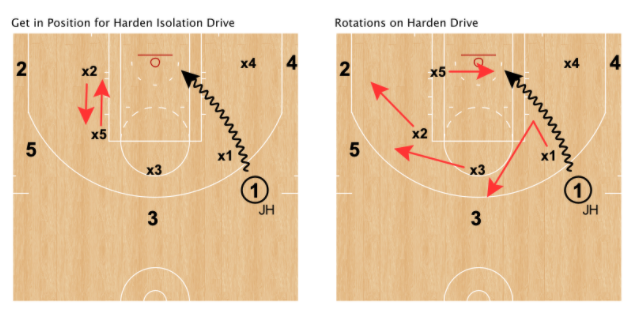
It’s like speed dating. Everyone shifts 1 man down. It’s not the most complicated defense out there, but it requires all those players paying attention and knowing the game plan.
If LA chooses to zone up instead with x2 guarding both shooters as x3 may or may not go to help, Houston will get open shots. If x2 and x3 go to cover those players but x1 doesn’t abandon Harden, the top of the key will get open 3s.
I’d probably start off with Harden’s man leaving immediately post-pass so he’s in more of a position to contest a shot at the rim along with the big, but if Houston is making their passes quickly enough we’ll need to have that player leave a bit earlier. Mixing it up when he leaves wouldn’t be the worst approach.
Now, if AD is defending Tucker at the top of the key and Houston has guys weak side wing and corner, I want AD dropping down and the other two rotating up a man so AD is again in the best help side position. From there we have the same rotations.
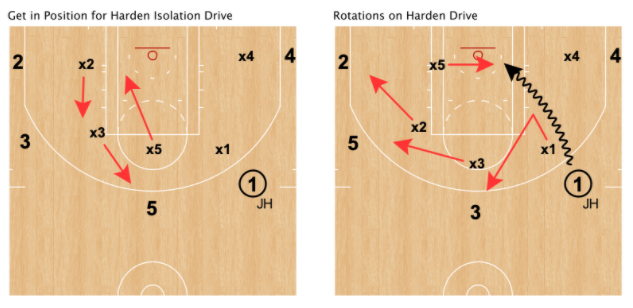
This approach also puts LA in a better position in case a coverage is blown. As long as the corner 3-point shooters are covered, and LA is conceding an above the break 3-point shot, they’re at least slightly altering the shot quality for Houston’s mostly questionable shooters by forcing further shots from the rim.
What we absolutely don’t want is 3 guys on the ball, which makes for easy rotations after a kick out to find the open shot. This has happened far too often in the series against Oklahoma City.
The only way this doesn’t help LA get a big in position is if their bigs are on-ball and strong side corner. Houston doesn’t get to this specific look often, but if they are able to target it we’ll need to adjust (we can cover this post game 1/2/etc. if it is occurring on impactful volume).
Houston’s Set Plays
We covered 5 sets for Portland that we expected to see used often (which was the case). Houston uses fewer sets and uses them less often, so we only have a couple plays to analyze. Because of that, we’ll mix in a couple specific actions I believe are of interest.
Play 1: Stagger Away
Houston had scored twice off of this play all restart as of game 3, and both times Harden was off the court. When he was on the court, this action was run to occupy help defense (a concept I talk about a ton on twitter) and clear his driving lane to isolate.
Read: when Harden has the ball, an isolation is probably coming and if so, likely a drive.
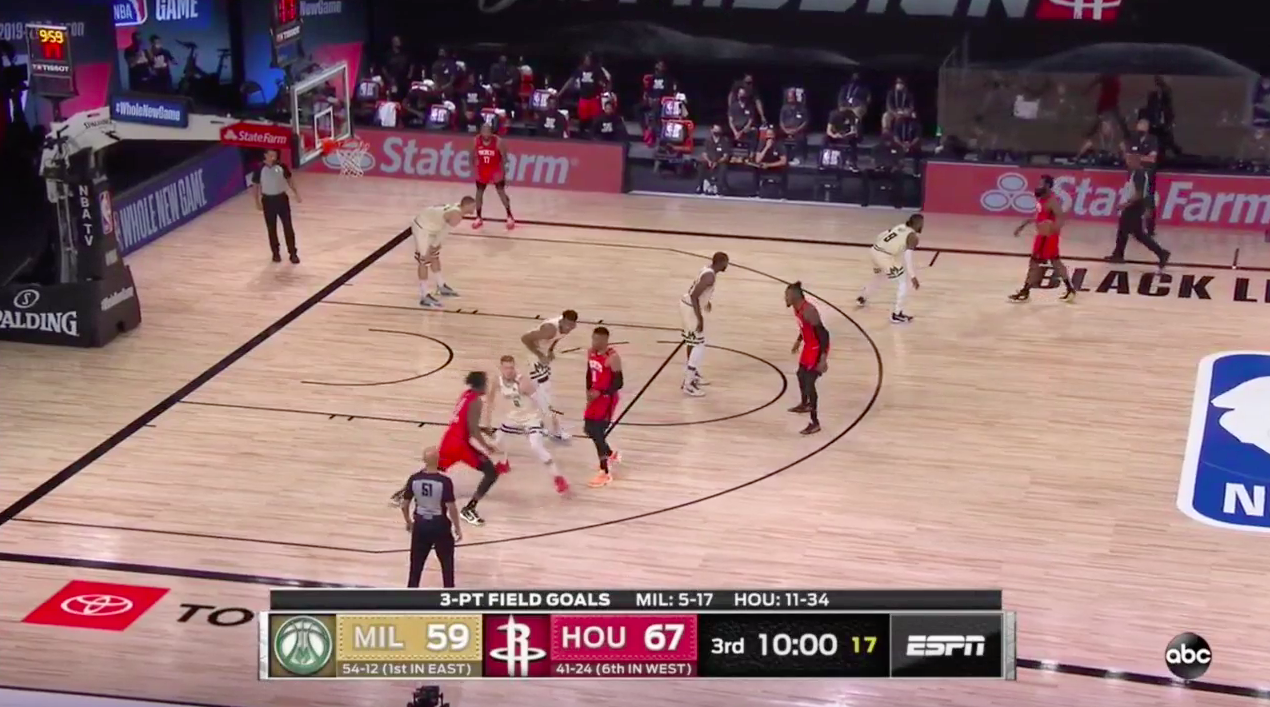
To defend this, I’m having the 1st and 3rd defender switch, with the 3rd one stepping out to take away any pass to any shooter. The man defending the guy going off the screens will sink to under the rim to be in position to take on a slip or drive. The defender for the 1st screener moves slightly into the lane to bump any attempted slip to the rim.
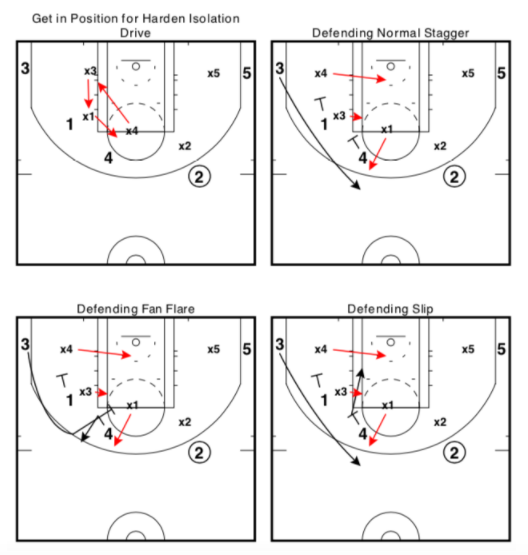
Houston has shown a couple counters/wrinkles I’d be aware of, but would be covered by using the approach detailed above.
- Slipping the 2nd screener, which will be open if his man steps up to take on the shooter and the shooter’s man also trails/goes under the screens. By having the shooter’s man sink under the rim we’re covered.
- Having the shooter set a “fan flare” screen for the 2nd screener. They’ll go to this if the defense is trailing the shooter off the stagger. By having the 2nd screener’s man step out ahead of time, we’re covered.
- If Harden decides to drive, we have a man in position. And if we’re switching off-ball the way I outlined earlier, that’ll likely be one of LA’s bigs.
- If the action doesn’t work, they’ll often put whoever ends up coming off the screens into a ball screen with Harden. If we’re switching off-ball the way I outlined earlier, that won’t be a Laker big so it’ll be an easy switch without extra concern.
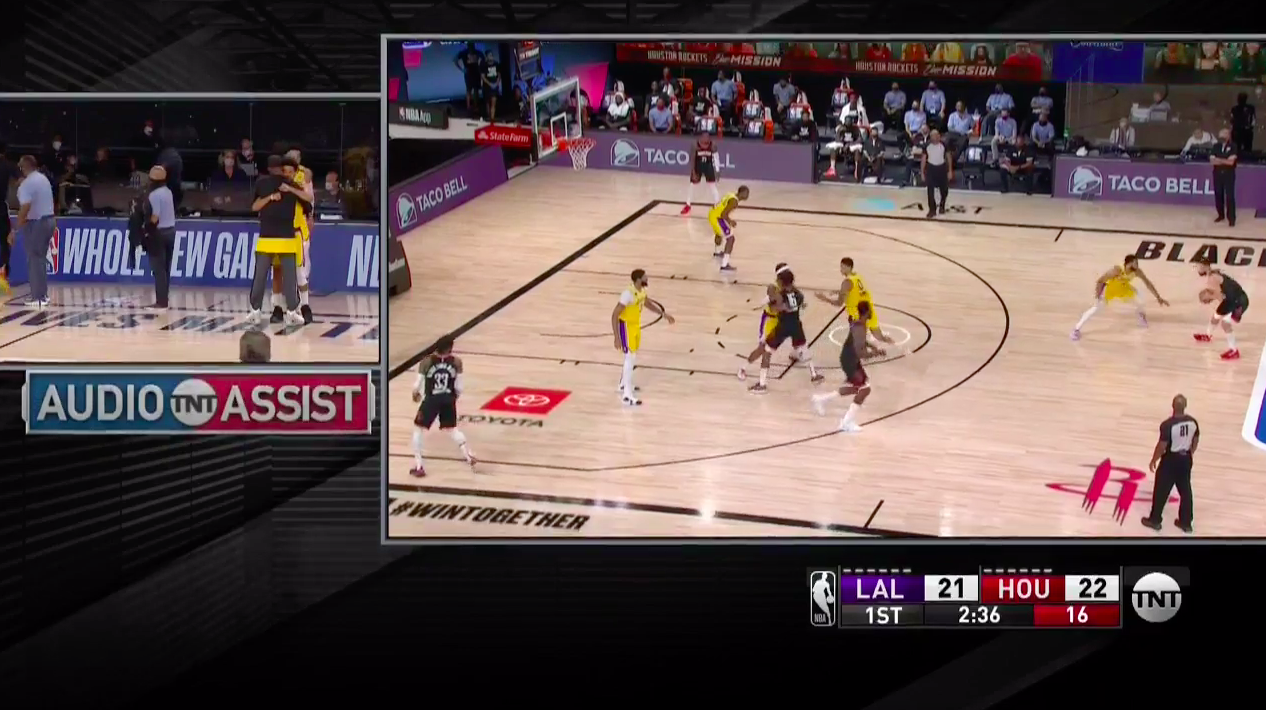
We want no 3, no slip, and Harden seeing bodies in the paint. If LA just trails the shot and drops the screener’s men, we’ll get those fan flares. If they just switch, we’ll see the slip. If they keep 3 defenders on 3 offensive players, that drive becomes far more open. Stick to this gameplan and LA will be okay.
This approach isn’t impervious to adjustments, but it would take Houston “out of book,” and force them to make adjustments I haven’t seen them make in the bubble. I can’t say they haven’t faced a defense play this way all year, but it’ll have at least been a while.
The adjustment I’d make if I were Houston would be to have both screeners screen their own men and have the shooter stop at the wing instead of going to the top of the key. With how MDA adjusts, I wouldn’t be surprised if we see this in game 1 if LA plays this coverage. LA is fine if x1 can get around that screen. If not, LA would need to adjust coverages. I’d personally commit to having that big be in a help position and adjust how you play with the other two defenders to mix it up and at least try to muddle up offense going that way. But again, when Harden/Russ is on-ball this is mostly a decoy. When Harden/Russ isn’t on-ball, I care less about having that big defend the rim.
Play 2: Rip Handoff
The second set Houston runs often is used in ATO (after timeout) and SLOB (sidelines out of bounds) situations. The goal of the play is to quickly get a Harden mismatch, and punish teams not acquiescing to that mismatch with a dunk.
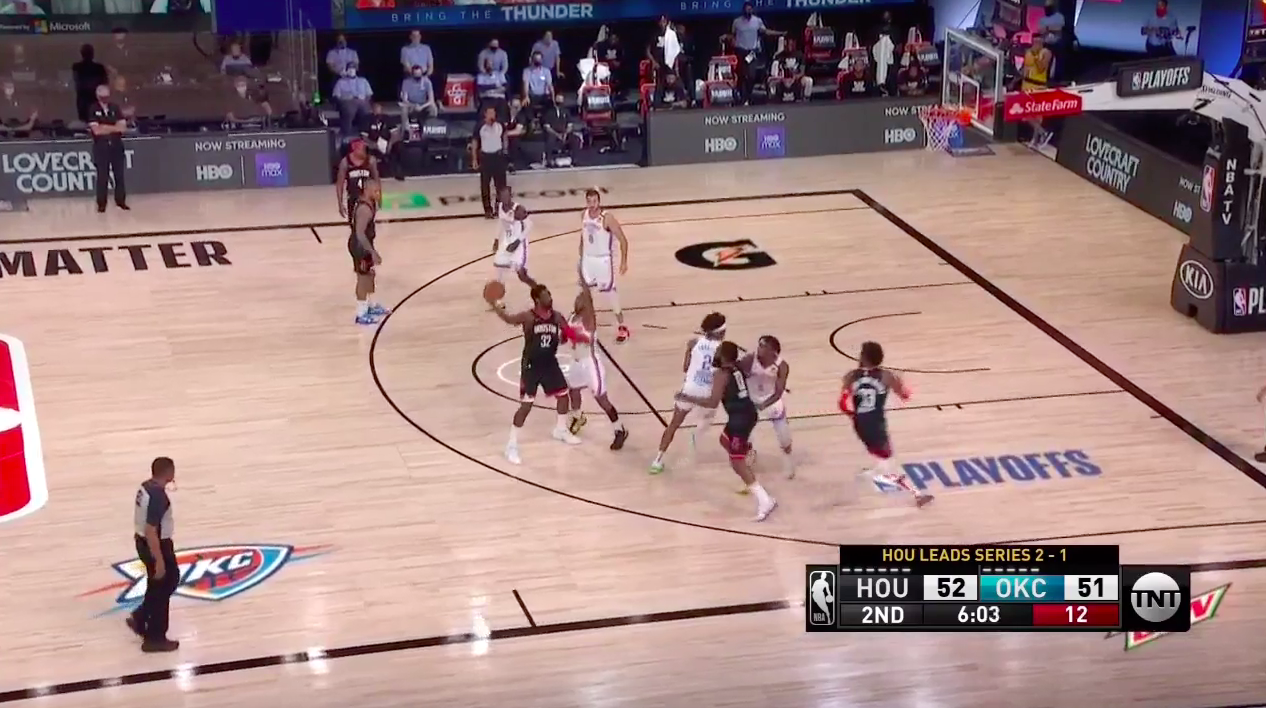
Normally, you run into a position picking between a possible dunk/layup and a switch. But screw that. My answer is no. Our approach to this play will be different than what I’ve seen any team do on film. We can turn to a Harvey Specter (Suits) quote for my philosophy here.
“What are your choices when someone puts a gun to your head?… You take the gun, or you pull out a bigger one. Or, you call their bluff. Or, you do any one of a hundred and forty six other things.”
To defend this, I’m having the inbounder’s man, who is the one that will be back screened, playing off his man and standing at the elbow, doubling the key trigger man to make this play work. This play doesn’t work if that pass can’t be made. And we concede nothing.
Houston might get switches other ways when that’s our best option, but I’m confident in our ability to recover to the inbounder to contest a pass back for a 3-point attempt if the pass goes to Harden on the block.
If we want to get frisky, we can take an alternative approach that ups the ante and commitment to preventing Harden from even being in position to set that back screen. To do so, we can zone-up the weak side and drop x4 to the paint, then front Harden while also doubling the high post. That should remove both of those options from receiving the inbounds pass, resulting in Houston needing either 1 or 4 in the diagram below to sprint to the ball / the back court for the inbounds pass or a skip inbounds pass we might be able to intercept. x1, zoned up to guard two options, knows he can’t get beat with a back cut and can thus be more aggressive and get in between the two Houston options to prevent being screened for a flare type look.
I’d start the game with that aggressive approach once and then back into the approach I described above. I don’t expect Vogel & Co. to take a similar approach, but I’d be incredibly fired up if they did.
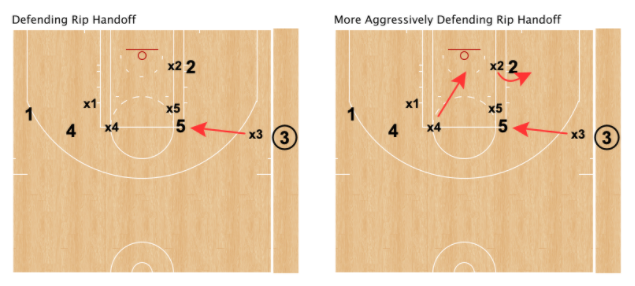
If LA doesn’t go either route, and the ball does get to the passer, we need on-ball pressure disrupting the pass the same way we talked about with Nurkic last series.
Defending Ball Screens
Houston gets the lowest percentage of their offense from the pick and roll of any NBA team by a wide margin (including passes as well). A big piece of this is how teams often switch against Houston. Houston will still use ball screens.
James Harden Pick & Roll
Harden would enter a series against the Lakers with a similar skill set as Dame Lillard did last series, purely from the standpoint of what you need to take away in the pick & roll. If you soft hedge he can pull up for 3s against you. If you hard hedge he might beat your big around the corner or get the ball to his teammates for a 4 on 3, and if you blitz he’ll get the ball out quickly for a 4 on 3 situation. And we know what happens on switches.
By the numbers, blitzing has been most effective. Houston handles 4 on 3 situations better than Portland, but they aren’t world beaters in those situations due to their perimeter shooting talent, movement/cutting, and talent attacking closeouts.
Here’s James Harden’s shot chart in the pick & roll this season:
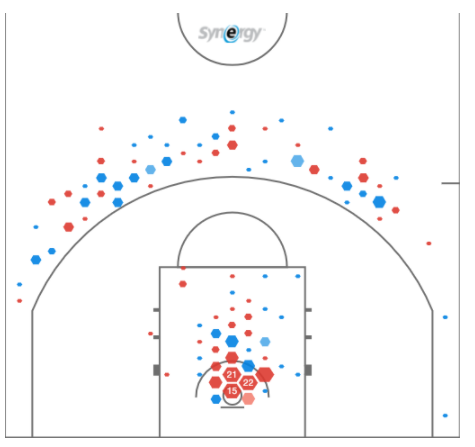
I’d ice side ball screens and start the series blitzing middle ball screens. The high ice “weak” coverage LA used against Dame and CJ last series won’t work nearly as well against Harden, because if you do a soft double like that he’ll be patient and find the best pass. Teams had success when they actually doubled Harden, and doubled hard.
Watch how patient Harden is on this possession, letting Trey Burke clear out and the hands closing up the pocket pass in the double open up before he makes the pass to Russ:
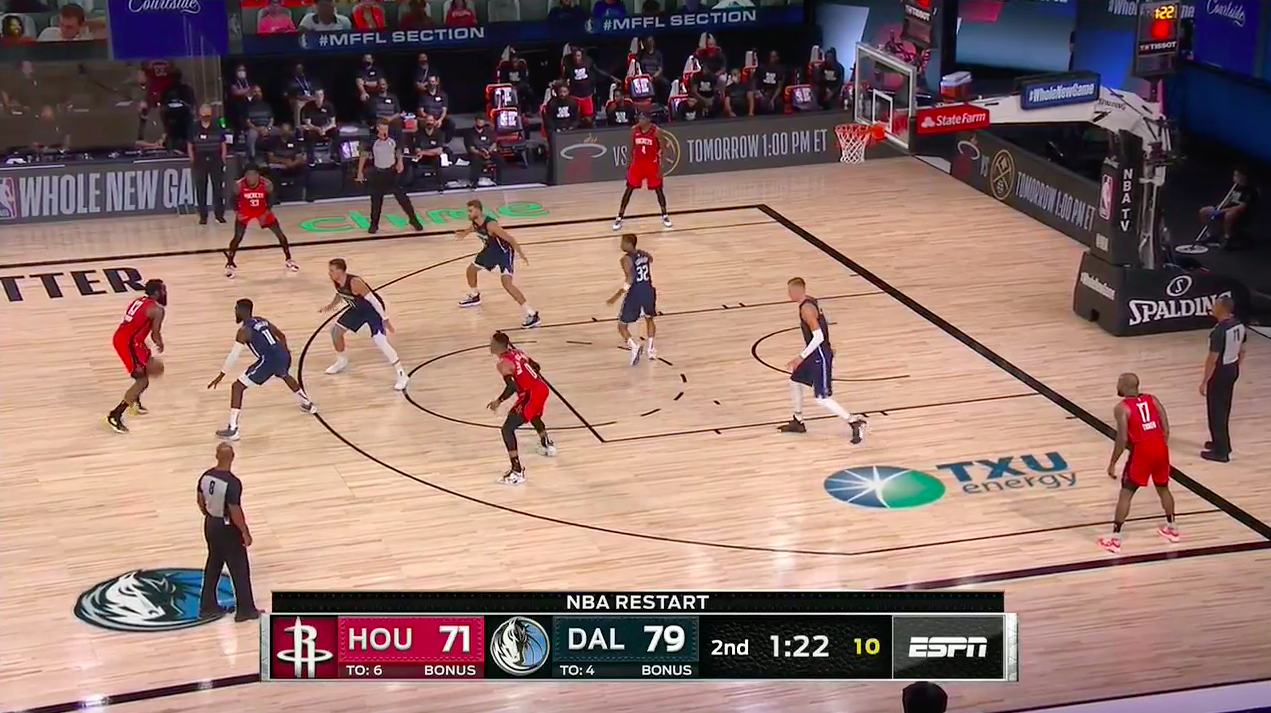
Compare that to when the defense forces the action here:
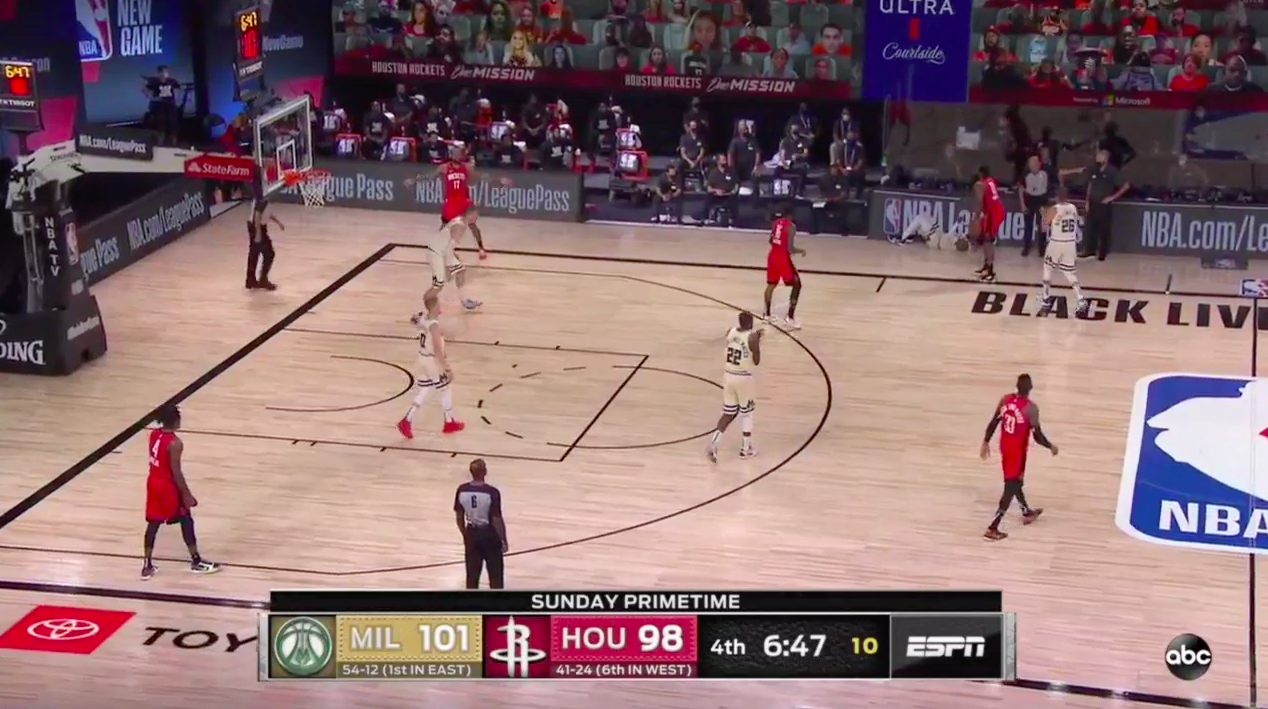
Along with that, I’d jump the pass to the screener slipping. Houston has a pretty automatic setup when you double, and any hard trap will result in the pass going there 90% of the time. That man will be a player that won’t beat you off the dribble (unless it’s Russ), so pressuring him if he does get the ball is the best move from there. These are poor playmakers, and pressure on them has resulted in poor decision making and transition looks the other way.
You want your players away from the ball and the short roll engaged mentally and zoning up the remaining players. Rotations need to be proactive, not reactive. You can’t have defenders asleep instead of zoning up the 2 guys on their side of the perimeter. Not doing so results in easy passes.
Here’s an example of what reactive and poor rotating looks like against Houston:
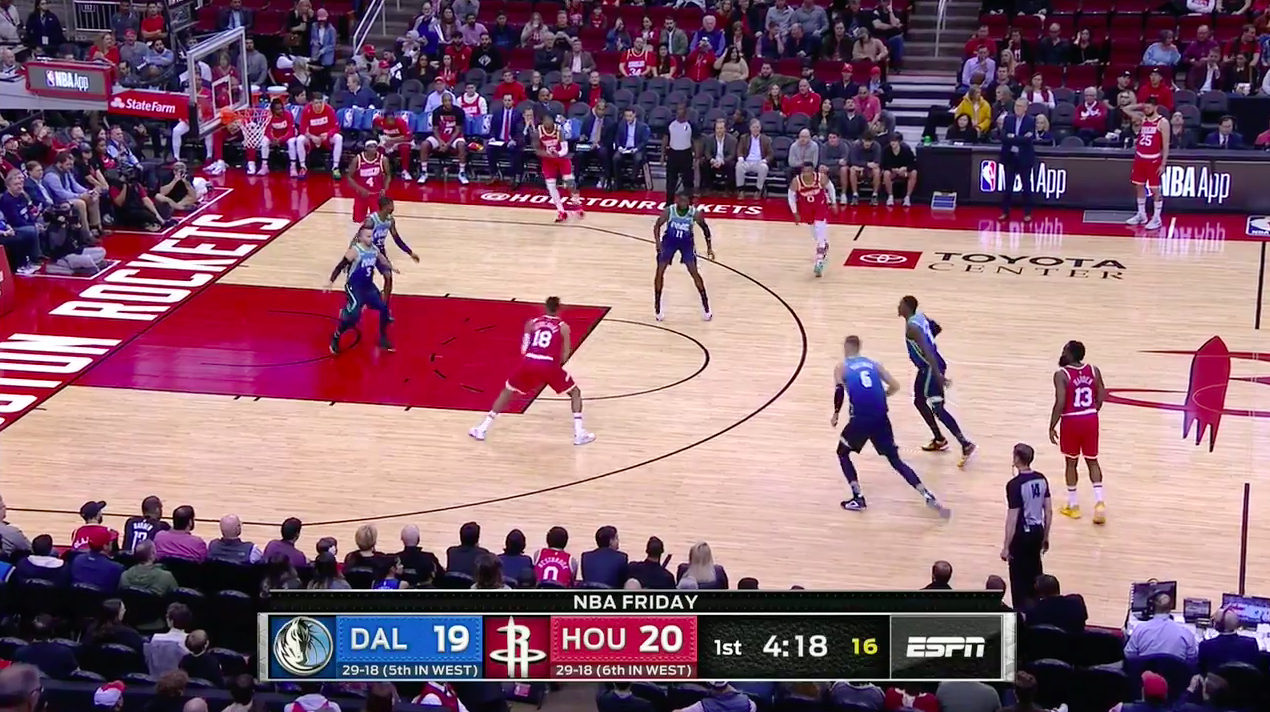
I’ve only seen Harden ever make 2 passes out of a hard trap. To the screener slipping or to a perimeter player almost even with him. Jumping that pass is another piece to the puzzle to stop Houston and get run outs on the other end.
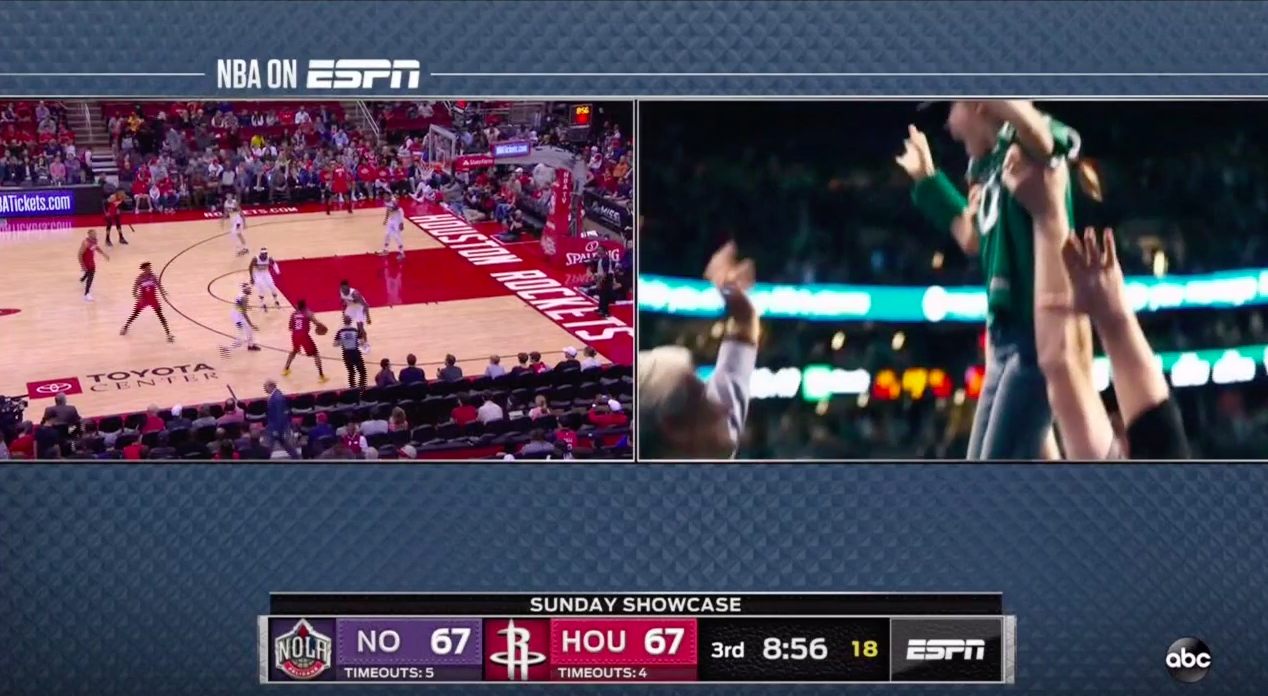
And the last key to doubling is getting one of the two players doubling to sprint to the extra Houston player as soon as Harden gets the ball out.
Your odds improve when you’re the aggressor and make every pass a hard one and every decision need to be a quick one. You need to know your rotations. Houston will only run ball screens out of a couple standard looks, so know you don’t want to leave the strong side corner.
It’s unlikely we’ll see anyone the ball goes to attacking off the dribble, players will be stationary, and we’ll rarely see any screening actions, so we can be more aggressive with doubling knowing where we need to recover. Houston, like Milwaukee, is a team easier to scheme against like this defensively as long as you’re the aggressor, because they stand around off-ball.
Assuming Houston responds well to that after a couple attempts, I’d go with switching ball screens in positions to score in the middle. That doesn’t mean auto-switch everything. If it’s far enough out that you can go under, do that. Harden won’t pull up from near half court the way Dame will. I’m fine giving up switches, but I want it to take an additional 5-6 seconds if possible.
Russell Westbrook
When Russ is running ball screens I’m playing drop coverage. He’s a bad pull up shooter but one that’s happy to do so far too often, so let’s let him. Ice side ball screens with a drop as well. No need to make this complicated.
Westbrook/Harden Pick & Roll
One combo I don’t anticipate we see much of is Westbrook/Harden ball screens. A guard/guard screen like that doesn’t usually accomplish much, this combo hasn’t yielded much from it, and Houston hasn’t done it much this season (per data provided by a source with Second Spectrum data, Houston uses this combo less than once per game). So I won’t cover it too much.
I’d switch if it does happen.
Jeff Green Inverted Pick & Rolls
I’d go under these and force Green to hit pull up 3s. Stick on Harden. If Houston starts using that against LA in game 1, for game 2 we’ll have adjustments in my breakdown for how to adjust.
Matchups
Since most of Houston’s players can’t hurt LA in mismatches efficiently enough for us to worry about it, a philosophy I’m bringing to this series is being liberal around switching on and off-ball (except when noted above) to stay in the best positions to deter drives from Harden.
That said, I’m find starting AD on Westbrook. I wouldn’t be sagging deep off of him off-ball, since Houston has shown they can take advantage of that with flare screens. If the volume of that isn’t high, though, I’d keep it up. It might be something to probe with and adjust if needed. If you are sagging, in the half court I think having LeBron or AD on Russ, who are both good roamers away from the ball, would make sense to me. With how often Russ runs in transition I can see LA staying away from LeBron on him. But LeBron is still a strong perimeter defender, so I’m not scared of that matchup.
I’d start Alex Caruso on James Harden. Lots of hair vs little hair. Bring it. With rim protection behind Caruso I feel good about his ability to execute a game plan and defend on-ball. In single-big lineups and without rim protection (due to Houston positioning LA’s big to negate them) I worry a lot more.
I’d keep KCP away from both of them. He’ll be a perfect ball hawk off-ball to pick off passes, rotate, and defend off-ball actions. But on-ball he’s not all that strong on the perimeter.
I’d start McGee/Howard on Tucker and Green on RoCo, but again, I don’t care a whole lot about these matchups. Covington is one of the few players on Houston that will take and make harder 3s.
This to me isn’t a good Morris at center series. He can close out better to the 3-point line, but LA will lose so much from him with offensive rebounding, rim deterrence and rim protection, he’s not too much of an on-ball defender, and remember, Houston is a horrible team at attacking closeouts, so that weakness is less emphasized this series.
It’s a series where AD will play some center, but I don’t think this is the series to commit to playing small (that’s what I’m considering small), unless LA makes some key offensive adjustments to attack a loaded paint (which I’d be thrilled with). If they can, that opens things up. If not, they’re losing OReb and defensive advantages and offensively facing the same packed paint AD and LeBron have been anemic facing all season. AD’s defense means nothing to LA if Houston can get him standing on the strong side corner watching Harden isolations and there’s no second rim protector. Effectively removing LA’s rim protection and allowing Harden drives + stagnant offense is a recipe for disaster.
The Lakers Offense
The Lakers offense worries me this series due to their weakness attacking switches schematically. But they should have dominant rebounding and post play, and as long as they play big they’ll have decent spacing for LeBron isolation.
LA can pick the matchups they want and go from there.
A spaced floor with bigs that can attack vertically (AD/Dwight/McGee) with lobs slipping to the rim should provide good offense, as should the “logo” ball screens we saw a tad in round 1, which would result in the screener having inside position on their new defender.
Ben McLemore, Robert Covington, and Austin Rivers are all horrific on-ball perimeter defenders, so watch for LA to hunt those matchups. Houston has limited McLemore and Rivers’ minutes likely because of this, but RoCo has been playing a ton and been a target we’ve seen OKC go at with confidence in round 1.
And really, only Harden an Westbrook are strong on-ball defenders on the perimeter. LeBron and AD attacking with drives should bode well for LA.
Here’s my video breakdown on how the Lakers will attack Houston’s defense, based on what they’ve shown this season in this exact matchup. I cover about a dozen ways LA can/have/should attack. Also of note is how LA’s air superiority provides a boost that the offense didn’t have against teams like Portland who play traditional bigs.
Houston plays a style defensively that also makes them vulnerable to flare screens. Alex Caruso’s tendency to set these becomes an even more valuable skill in this matchup, and I’d love to see more of that from LA in general.
Houston also has a small enough rotation that foul trouble can cause big issues for them, including getting some of those poor defenders on the court more. In terms of our Foul Trouble % metric, Houston has guys ranking 1st (Tucker), 6th (Westbrook), and 7th (Harden) highest. Part of that is they foul often. Part of that is Houston plays them through foul trouble. But it’d be devastating if LA can get any of these players off the court and get into the depth of this Houston team.
Post Offense
If the Lakers play big lineups and have Howard/McGee in the opposite dunker spot as AD posts up, he’ll have space to operate (as I covered in my video). 88% paint packing vs 44% in small vs big lineups for LA. TWICE as often. That’ll be the key to watch.
AD will likely be guarded often by PJ Tucker, who I’m not scared of. Tucker’s defensive efficiency in the post, per Second Spectrum data from a source, had him in only the 58th percentile. Covington was 54th percentile. Above average, but not the caliber of defense that worries me as long as LA can keep the floor spaced.
As I covered in my video, here are AD’s post efficiencies against Houston this season based on lineup size for LA:
Small lineup: 0.85 PPP
Big Lineup: 1.0 PPP
Harden as a post defender has good data, and one reason has to do with some of his sneakier (but legal!) post tactics defensively.
"The hand is considered 'part of the ball' when it is in contact with the ball. Therefore, contact on that part of the hand by a defender while it is in contact with the ball is not illegal." pic.twitter.com/0ghw0IKcWD
— Cranjis McBasketball (@Tim_NBA) August 25, 2020
But against Harden, and any of these other short guys, LA should be able to dominate down low as long as their bigs rise and protect the ball, then shoot. Letting them swipe at you isn’t the way to go.
AD posting up like this and protecting the ball will be important if Houston ends up being the round 2 matchup pic.twitter.com/pX63Z9r9Oz
— Cranjis McBasketball (@Tim_NBA) August 25, 2020
Another guy that can dominate the post is Dwight Howard. His strength allows him to bury defenders, and especially weaker ones like these Houston guys or Carmelo Anthony last series, and catch the ball deep in the paint for easy baskets or fouls drawn.
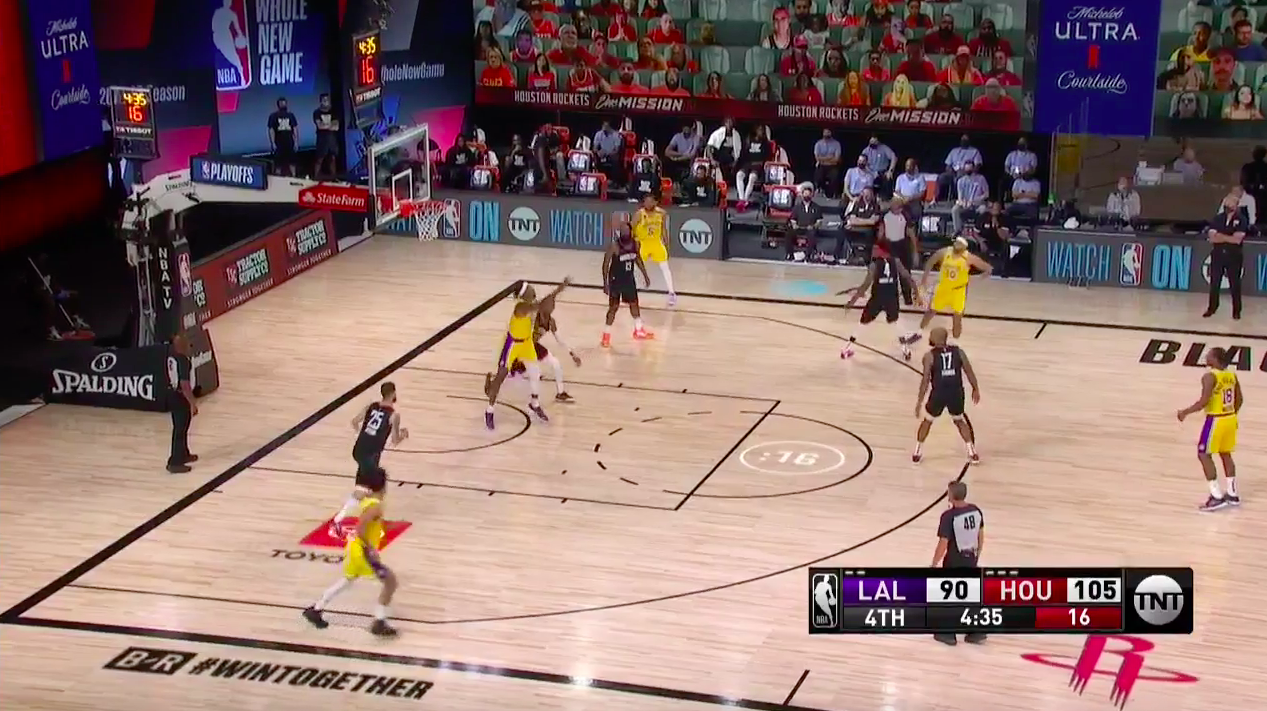
A defensive tactic to be aware of from Houston is their tendency to send help from the baseline. That’s their go-to, and it also happens to be the way AD prefers to turn. If you remember from my breakdowns of the Portland-Lakers series, I talked specifically about how sending a double, if it does come, would be smart to bring baseline against AD. Portland rarely did, but Houston will often.
In big lineups, this will open up lobs to McGee/Dwight/AD (if he doesn’t have the ball). In small lineups, having AD at that dunkers spot or opposite block is the way to create that same look for the offense. Houston doesn’t want to help off of that guy, which is why we saw him kick ass against Houston when they’ve played this year and played big lineups.
This creates more spacing than when LA would go 4-out 1-in and have 4 shooters stand around AD/LeBron. Houston sent the help from the same location but those situations, and then would zone up the remaining players. LA’s players were more spaced, but Houston’s were. LA had spacing, but not functional spacing, which is a core concept to basketball.
Look at these two diagrams. This is what Houston’s defense looked like against LA this season. Where does LA have their offensive players spaced more? On the right, going small. Where is the defense more spaced? On the left, with LA going big. That’s functional spacing.
If a second Houston defender comes, do where can they come from on that diagram on the left where LA can’t get a wide open shot? Nowhere.
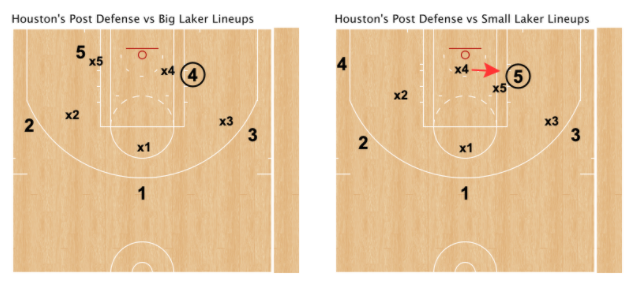
So when LA does play small, because they still will even if they primarily go big, they’ll want to have AD in that dunker spot and let LeBron attack from the post. Facing up with AD and Bron to see the floor better might be worth exploring to see if they can avoid the deflections and steals Houston will swipe for.
Houston also ball-watches a bit, and are susceptible to cuts in situations where LA will be 4-out 1-in, so that is an additional counter to the paint packing. The Lakers haven’t done much of this other than with Caruso here and there, which is why I’m hesitant to anticipate great counters for paint packing against small lineups. Attacking via lobs is something LA has done against Houston, did last series against Portland, fits their normal rotations, and thus to me is a more likely approach from them.
Attacking Harden
James Harden at this stage in his career is actually a pretty good on-ball defender, both on the perimeter and interior. That said, for a guy who has the 7th highest Foul Trouble % rate in our database, the areas defensively that get him in foul trouble most often are defending post ups (he fouls ~10% of the time), being the big man defender in a P&R (~10%), and perimeter isolation (~8%).
Get him out of a game because of foul trouble and your odds to win that game go up a ton.
The idea of him being the big man defender in ball screens is intriguing to me. But this means less with Houston switching as often as they do.
Where Harden is pretty poor is his off-ball screen defense. That’d be an area I’d target if he’s ever defending KCP. Houston switches on-ball defensively, but off-ball they’re primarily a lock & trail team (although they’ll also switch probably more than anyone).
Offensive Rebounds
This is an area I cover in my video, so I won’t share too much here. Houston is a poor rebounding team small and LA is a good rebounding team big. Strength on weakness can lead to dominance in that area of the game, and getting LA a dozen more possessions than Houston increases the Lakers’ room for error when it comes to shooting luck.
Overall Analysis
The idea of Houston scared me way more than they do now, after digging into the reality of their team and roster. They have some strong concepts and a coach that’ll adjust offensively, but their personnel leaves a lot to be desired. With the right tactical moves I feel very strongly that the Lakers can dominate this series.
Lakers in 5. And I only say 5 instead of 4 because I know Harden has a crazy game in him. But if LA does go big and dominates, the Rockets have little wiggle room due to their personnel to adjust. If they start big and this analysis is somehow all wrong (from a process standpoint, not just results of 1 game), LA has room to adjust (including go small/big). That’s a luxury Houston doesn’t have, and I just don’t see their roster having the talent to win this series. You can change ball screen coverages, but you can’t make dudes taller.
Bonus: if you want to quiz yourself on Harden’s iso tendencies, check out this thread of plays from OKC/HOU game 7 where the positioning of OKC’s bigs, funny enough, was very predictive of how Harden attacked the defense:
In the video, which you can find here, I dig into Harden's iso tendencies: https://t.co/kFezOka8gV
HOU cares who is guarding him *and* where opposing rim protection is.
Let's look at some examples from tonight's game 7. I bet you'll be able to spot the trends. https://t.co/vo66IKBxOv
— Cranjis McBasketball (@Tim_NBA) September 3, 2020
